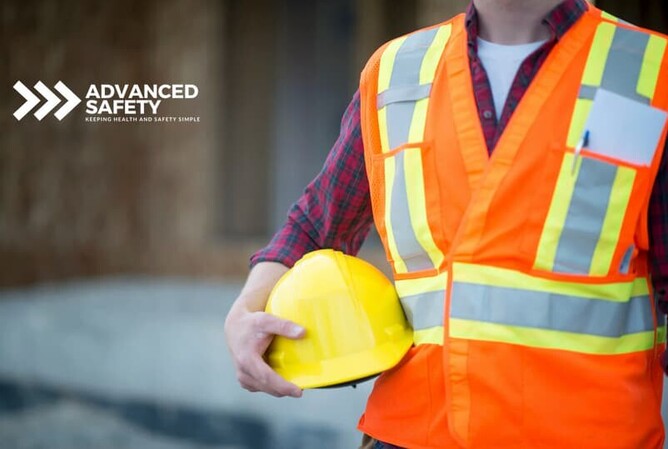In New Zealand, health and safety representatives play a vital role in ensuring workplaces remain safe, compliant, and worker-centred. Their presence isn’t just good practice - it’s increasingly expected under the Health and Safety at Work Act 2015 (HSWA).
Whether you’re leading a small team or managing a large organisation, understanding the purpose, powers, and practicalities of health and safety representatives can help you build a safer, more productive workplace.
This article covers everything you need to know, from the election process to their powers under the law, and how your business can support HSRs for long-term success.
What Are Health and Safety Representatives?
Health and safety representatives (HSRs) are elected workers who represent their peers on health and safety matters in the workplace. They provide a formal, visible avenue for worker participation and are a key part of any effective safety management system.
Appointed by members of their work group, HSRs ensure that workers’ voices are heard and that concerns are addressed quickly and effectively.
Becoming a Health and Safety Representative in New Zealand
Under HSWA and its accompanying Worker Engagement, Participation and Representation Regulations, a health and safety representative must be:
A worker, elected by members of their work group.
Formally elected through a lawful process that includes nominations, voting, and clear communication.
Elections must be initiated by the business within two months of receiving a request from workers for an HSR. Workers can vote only for someone within their designated work group.
Functions and Powers of Health and Safety Representatives
The law clearly outlines both the functions and powers of HSRs. These are divided into basic powers (which any elected HSR can exercise) and extended powers (available only after approved training).
Functions of Health and Safety Representatives
Represent workers on health and safety matters.
Investigate complaints and risks.
Monitor safety measures taken by the PCBU.
Provide feedback on the effectiveness of those measures.
Make recommendations to improve health and safety outcomes.
Powers of Health and Safety Representatives
Once trained, HSRs have extended powers such as:
Issuing a Provisional Improvement Notice (PIN).
Directing unsafe work to cease.
Requesting access to relevant health and safety information.
These powers enable them to act swiftly and effectively, while still working collaboratively with management.
Health and Safety Representative Training and Qualifications
To gain extended powers, a health and safety representative must complete initial training aligned with NZQA unit standard 29315.
Key Points:
Training must be delivered by NZQA-approved providers.
Once trained, an HSR can issue PINs and direct unsafe work to stop.
PCBUs are legally required to pay for the training and allow time off (up to two days per year) to attend.
Additional training may be undertaken in subsequent years using annual HSR entitlements.
Health and Safety Representatives and the Election Process
Forming Work Groups
Before elections, a PCBU must define work groups - logical groupings of workers based on factors like location, job type, or level of risk.
Temporary work groups can also be used for short-term or complex projects with high variability.
The Election Process
Elections must be fair and open.
Anyone from the work group can nominate themselves or others.
Voting must be confidential if requested by any party.
Elected HSRs serve terms of up to three years and can be re-elected.
Key Responsibilities of Health and Safety Representatives
A health and safety representative must balance advocacy and compliance. Their key responsibilities include:
Proactively monitoring risks.
Acting as a communication bridge between workers and management.
Participating in workplace inspections and incident investigations.
Contributing to the development and review of health and safety policies.
Attending interviews with WorkSafe inspectors (with worker consent).
Using the Powers: PINs and Ceasing Unsafe Work
Once trained, HSRs can:
Issue Provisional Improvement Notices (PINs)
Used when a worker or PCBU is believed to be breaching HSWA.
Specifies the issue and gives a timeframe to fix it.
Can be appealed to WorkSafe for review.
Direct Unsafe Work to Cease
If an HSR believes serious risk is present, they can stop the work.
Ideally, this follows consultation with the PCBU.
If the hazard is immediate or severe, work may be stopped immediately with PCBU notified afterward.
Supporting Health and Safety Representatives: PCBU Obligations
Under HSWA, businesses must support HSRs by:
Facilitating fair elections.
Funding training and associated costs (e.g. travel).
Consulting with HSRs on health and safety matters.
Providing timely feedback on HSR recommendations.
Making their details available to all workers.
Ensuring access to relevant (non-personal) health and safety information.
Failure to meet these obligations can not only erode worker trust but also result in legal action.
Protections for Health and Safety Representatives
HSRs are legally protected from negative treatment due to their role.
These protections include:
Protection from discrimination or unfair treatment.
Safeguards against misleading or pressuring them regarding their role or powers.
Assurance of workplace support and confidentiality.
WorkSafe may intervene if an HSR is being undermined or misused by a PCBU or another party.
When a Health and Safety Representative Ceases to Hold Office
A health and safety representative may cease their role if:
They resign in writing.
Their term ends and they are not re-elected.
They change work groups or employers.
The majority of workers in their group no longer support them.
WorkSafe determines they have misused their powers (e.g. issuing PINs in bad faith or disclosing private info).
Health and Safety Representatives and Continuous Improvement
Strong HSRs are not static contributors – they evolve with your business.
Encourage ongoing training beyond initial certification.
Involve HSRs in annual reviews and strategic planning.
Include them in health and safety committees.
Track their impact using key metrics like incident reporting rates and staff engagement.
Health and Safety Representatives and Worker Engagement
Worker engagement is a core pillar of HSWA, and health and safety representatives are the mechanism by which this is achieved. When HSRs are supported, trained, and visible:
Workers are more likely to report hazards.
Near-miss reporting increases.
Safety conversations become more collaborative.
This engagement leads to better data, stronger buy-in, and safer outcomes across the board.
Want to discuss your safety goals?
Contact Advanced Safety for professional guidance and support.
Contact Us TodayConclusion: Health and Safety Representatives Are Essential
Health and safety representatives are a cornerstone of New Zealand’s approach to safer workplaces.




